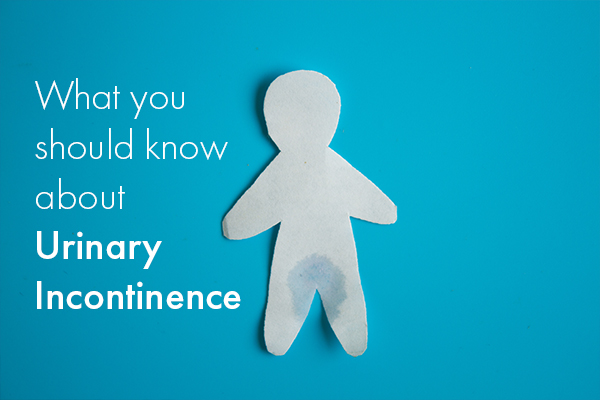What is Urinary Incontinence?
What is Urinary Incontinence?
Our body's urinary system is complex. The bladder stores urine, then the sphincters or muscles surrounding the urethra hold urine in until you're ready to release it. The pelvic floor muscles are also important in this system by supporting the sphincters, urethra, bladder, and pelvic organs. When any of these parts of the urinary system don't perform correctly, urinary incontinence can occur.
Urinary incontinence is defined as involuntary urination or loss of bladder control which is a common but embarrassing and uncomfortable condition. In mild cases, urine will occasionally leak when coughing, sneezing, laughing, or with other quick movements. With severe urinary incontinence, the urge to urinate can be so strong and sudden that it's near impossible to get to a bathroom in time.
Though it more commonly affects older people, individuals at any change can struggle with urinary incontinence and urinary system problems. If the condition is noticeable, frequent, and affects your daily activities, it may be time to visit a doctor.
Types of Urinary Incontinence and Their Symptoms
The most common type of urinary incontinence include:
● Stress incontinence - Urine leaks as a result of pressure on your bladder, often caused by sneezing, coughing, laughing, exercising, or lifting heavy objects.
● Urge incontinence - You experience intense and sudden urges to urinate followed by involuntary urination. This may also include urinating much more frequently, such as throughout the night.
● Overflow incontinence - Frequent or even constant dribbling of urine can occur because the bladder doesn't empty completely.
● Mixed incontinence - It's possible to experience more than one type of urinary incontinence at a time. Most commonly, stress and urge incontinence are experienced simultaneously.
Treatment For Urinary Incontinence
When it comes to treating urinary incontinence, the appropriate course will depend on the type of incontinence, age, overall general health, and mental health. Some of the methods used to help treat this condition include:
● Exercises to help strengthen the pelvic floor and urinary sphincter muscles.
● Bladder training helps to control urges to urinate.
● Medications
● Medical devices such as urethral inserts, catheters, pessary, bulking agents, and more.
● Surgery to correct issues with the urinary system.
Urology Services in New York
New York Health features board-certified urologists in Manhattan, Queens, the Bronx, Brooklyn, and Suffolk County, treating a wide range of urological conditions. At NY Health, we provide highly professional, sensitive, and personalized care.
We continuously strive to deliver the best medical care possible with your well-being in mind. At NY Health, all of our patients are family.
Contact us to learn more about how we can help you!

